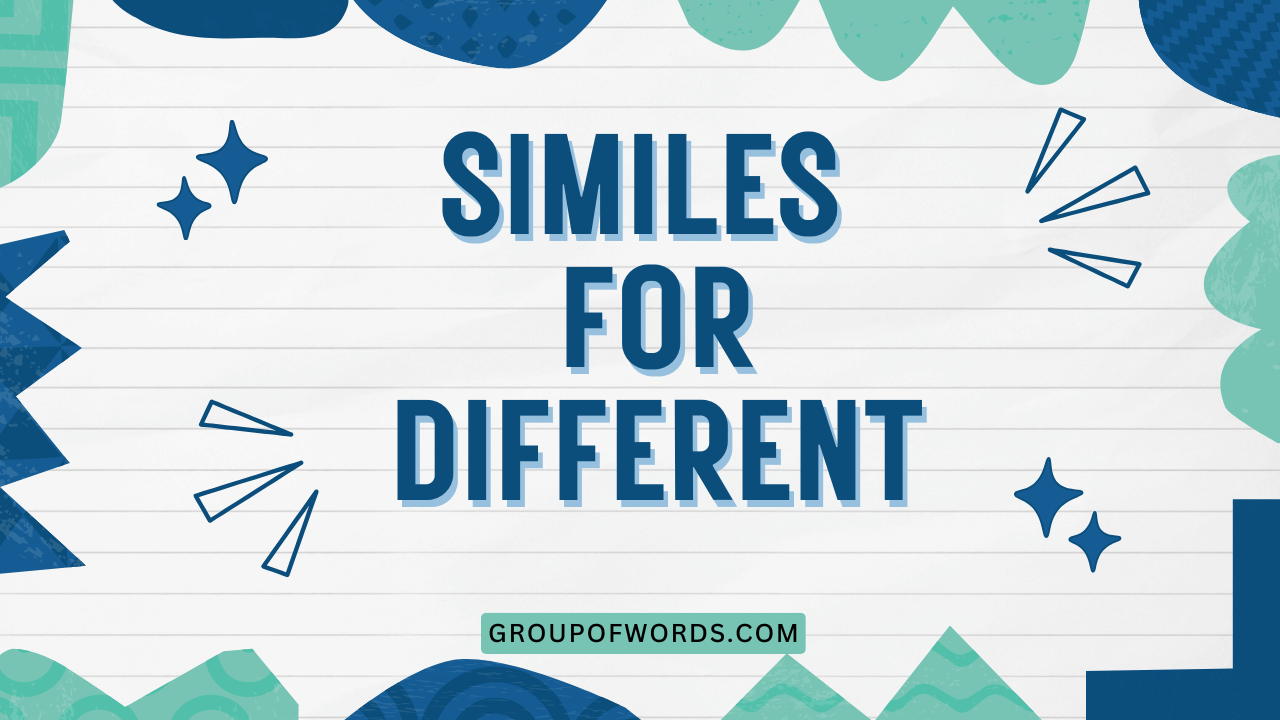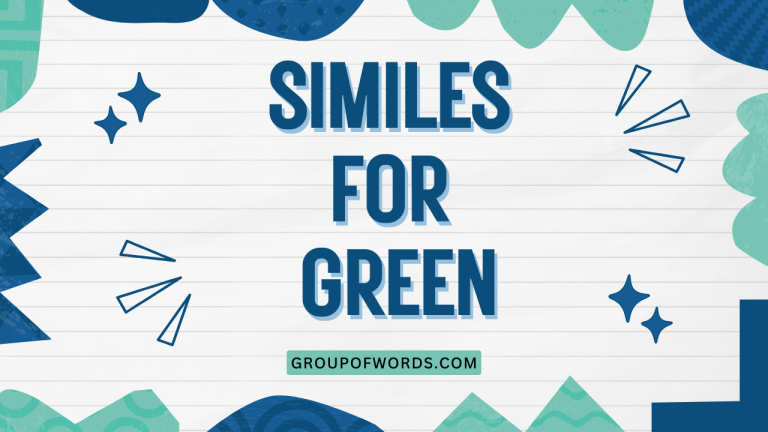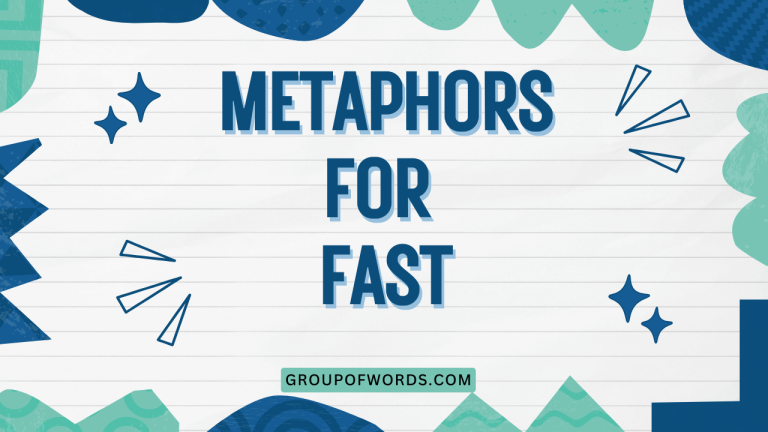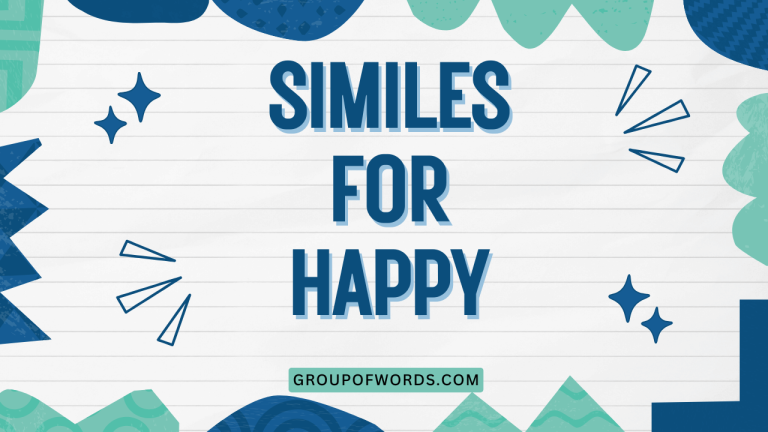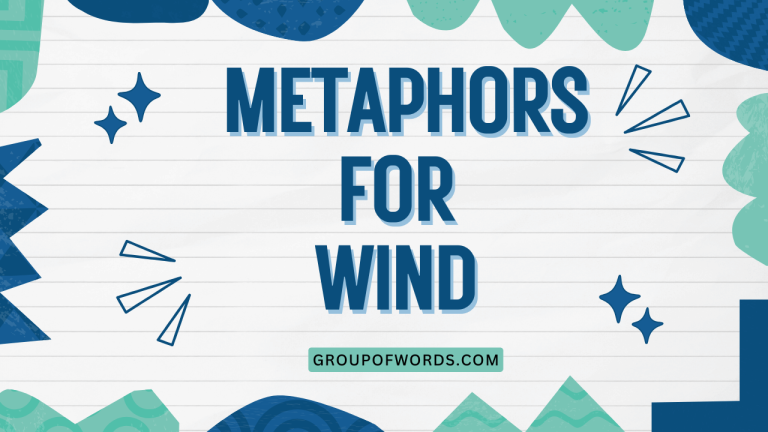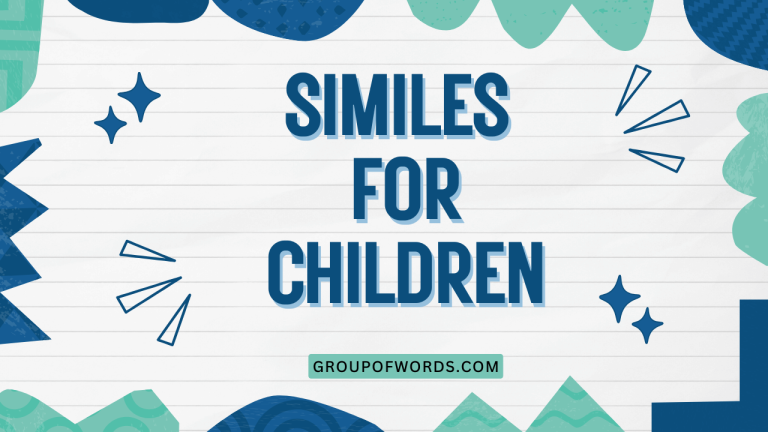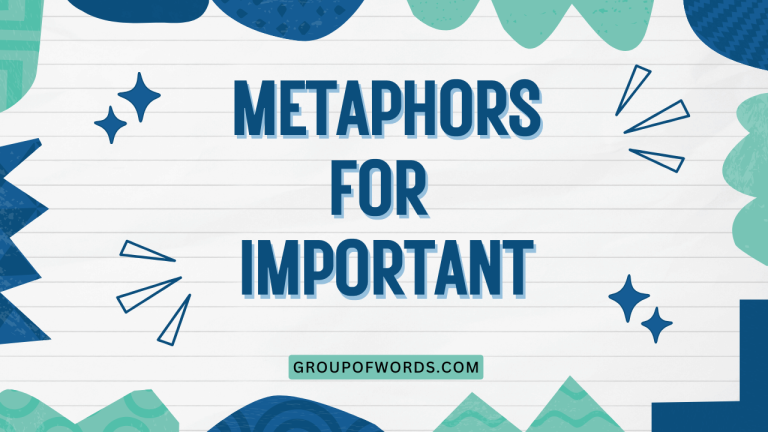Similes for ‘Different’: A Comprehensive Guide
Understanding how to use similes effectively is crucial for enriching your writing and speech. By employing similes, you can paint vivid pictures and create memorable comparisons.
This article focuses specifically on similes that express the concept of ‘different,’ providing you with a wide array of options to convey uniqueness, distinction, and dissimilarity. Whether you’re a student, writer, or simply someone looking to improve their communication skills, this guide will equip you with the knowledge and tools to master the art of using similes for ‘different’.
This comprehensive exploration will delve into the definition of similes, their structural components, and various types, all while focusing on how they can be used to illustrate the concept of ‘different.’ We will provide numerous examples, usage rules, common mistakes to avoid, practice exercises, and advanced topics to ensure a thorough understanding. By the end of this article, you’ll be able to use similes to express ‘different’ with creativity and precision, adding depth and color to your language.
Table of Contents
- Definition of Similes
- Structural Breakdown of Similes
- Types and Categories of Similes for ‘Different’
- Examples of Similes for ‘Different’
- Usage Rules for Similes
- Common Mistakes When Using Similes
- Practice Exercises
- Advanced Topics in Similes
- Frequently Asked Questions (FAQ)
- Conclusion
Definition of Similes
A simile is a figure of speech that compares two unlike things, often using the words “like” or “as.” The primary function of a simile is to create a vivid and relatable comparison, enhancing the reader’s or listener’s understanding and imagination. Unlike metaphors, which directly equate two things, similes acknowledge the distinction while highlighting a shared quality.
Similes serve to clarify, emphasize, or beautify descriptions, making them an essential tool in both creative and expository writing.
In essence, a simile is a bridge between two seemingly disparate concepts, illuminating a connection that might not be immediately apparent. This connection is based on a shared characteristic or attribute, which the simile brings to the forefront.
The effectiveness of a simile lies in its ability to evoke a strong mental image and create a deeper understanding of the subject being described. They are used frequently in everyday speech and literature to add color and clarity to language.
Structural Breakdown of Similes
The basic structure of a simile consists of three key elements: the subject being described (the tenor), the object to which it is compared (the vehicle), and the shared quality or characteristic (the ground). The words “like” or “as” act as the connectors, explicitly indicating the comparison.
Understanding this structure is essential for creating effective and meaningful similes.
For example, in the simile “He is as different as night and day,” “He” is the tenor, “night and day” is the vehicle, and the shared quality is the stark contrast or difference. The word “as” connects the tenor and the vehicle, making the comparison clear.
Recognizing these components allows you to deconstruct existing similes and construct new ones with greater precision. The order can sometimes be reversed, but the core elements remain the same.
Types and Categories of Similes for ‘Different’
Similes for ‘different’ can be categorized based on what aspect of difference they emphasize. These categories help to refine the comparison and make it more impactful.
We can categorize them by degree of difference, nature of difference, and origin of difference.
Similes Emphasizing Degree of Difference
These similes highlight how much two things differ. Examples include “as different as chalk and cheese” or “as different as heaven and hell.” These similes focus on the magnitude of the dissimilarity.
Similes Emphasizing Nature of Difference
These similes focus on the kind of difference that exists. For example, “as different as a cat and a dog” emphasizes that they are different species with different behaviors.
“As different as a square and a circle” highlights the difference in shape.
Similes Emphasizing Origin of Difference
These similes point to the source or cause of the difference. An example might be, “as different as a plant grown in sunlight and one grown in darkness,” suggesting that environmental factors are the cause of the disparity.
Examples of Similes for ‘Different’
The following tables provide a wide range of similes for expressing ‘different,’ categorized for easier understanding and application. Each category focuses on a specific aspect where differences can be highlighted.
General Difference
This table includes similes that convey a general sense of being different, without specifying the exact nature of the difference. These are useful when you want to simply emphasize that two things are not alike.
| Simile | Explanation |
|---|---|
| As different as night and day | Emphasizes a stark contrast. |
| As different as chalk and cheese | Highlights a fundamental incompatibility. |
| As different as fire and ice | Suggests opposing forces or qualities. |
| As different as oil and water | Indicates an inability to mix or coexist. |
| As different as black and white | Implies a clear and distinct contrast. |
| As different as cats and dogs | Highlights inherent differences in behavior and temperament. |
| As different as summer and winter | Emphasizes a seasonal and significant change. |
| As different as heaven and hell | Suggests opposite moral or spiritual states. |
| As different as north and south | Indicates opposite directions or perspectives. |
| As different as a horse and a cart | Highlights a difference in purpose or function. |
| As different as a hammer and a nail | Emphasizes a difference in roles within a system. |
| As different as a lock and a key | Highlights the complementary nature of two different things. |
| As different as a mountain and a valley | Emphasizes a difference in elevation and landscape. |
| As different as a whisper and a shout | Highlights a difference in volume and intensity. |
| As different as a king and a pauper | Highlights a difference in social status and wealth. |
| As different as a scholar and a fool | Emphasizes a difference in intelligence and wisdom. |
| As different as a saint and a sinner | Highlights a difference in moral character. |
| As different as a teacher and a student | Emphasizes a difference in knowledge and experience. |
| As different as a general and a soldier | Highlights a difference in rank and authority. |
| As different as a melody and a cacophony | Emphasizes a difference in musical harmony. |
Personality Differences
This table focuses on similes that highlight differences in personality traits, attitudes, or behaviors between individuals. These are helpful when describing how people’s characters diverge.
| Simile | Explanation |
|---|---|
| As different as an extrovert and an introvert | Highlights differences in social behavior and energy levels. |
| As different as a leader and a follower | Emphasizes differences in initiative and decision-making. |
| As different as a pessimist and an optimist | Highlights differences in outlook and expectations. |
| As different as a rebel and a conformist | Emphasizes differences in adherence to social norms. |
| As different as a saint and a devil | Suggests opposing moral characters. |
| As different as a dove and a hawk | Highlights differences in temperament and approach to conflict. |
| As different as a tortoise and a hare | Emphasizes differences in pace and approach to tasks. |
| As different as a lion and a lamb | Suggests differences in strength and gentleness. |
| As different as a butterfly and a caterpillar | Highlights differences in maturity and stage of development. |
| As different as a free spirit and a control freak | Emphasizes differences in approach to freedom and order. |
| As different as a chatterbox and a wallflower | Highlights contrasting social interactions and comfort levels. |
| As different as a comedian and a stoic | Emphasizes differences in expression and emotional response. |
| As different as a dreamer and a realist | Highlights differences in aspirations and pragmatism. |
| As different as a giver and a taker | Emphasizes differences in generosity and selfishness. |
| As different as a worrier and a carefree soul | Highlights differences in anxiety levels and outlook on life. |
| As different as a perfectionist and a laid-back person | Emphasizes differences in standards and approach to work. |
| As different as a risk-taker and a cautious person | Highlights differences in willingness to face danger and uncertainty. |
| As different as a traditionalist and an innovator | Emphasizes differences in respect for the past and enthusiasm for the future. |
| As different as a minimalist and a maximalist | Highlights differences in approach to possessions and lifestyle. |
| As different as a bookworm and a social butterfly | Emphasizes differences in preferred activities and social engagements. |
Appearance Differences
This table includes similes that focus on differences in physical appearance, style, or aesthetic qualities. These are useful for describing visual contrasts between people or objects.
| Simile | Explanation |
|---|---|
| As different as a rose and a thorn | Highlights differences in beauty and sharpness. |
| As different as a skyscraper and a shack | Emphasizes differences in size and grandeur. |
| As different as a diamond and a pebble | Highlights differences in value and appearance. |
| As different as a rainbow and a monochrome painting | Emphasizes differences in color and vibrancy. |
| As different as silk and burlap | Highlights differences in texture and elegance. |
| As different as a swan and an ugly duckling | Emphasizes differences in initial appearance and eventual beauty. |
| As different as a sports car and a minivan | Highlights differences in style and functionality. |
| As different as a designer dress and a thrift store find | Emphasizes differences in cost and fashion. |
| As different as a groomed poodle and a stray mutt | Highlights differences in care and breeding. |
| As different as a polished gem and a rough stone | Emphasizes differences in refinement and natural state. |
| As different as a sunset and a sunrise | Highlights differences in time of day and associated colors. |
| As different as a full moon and a new moon | Emphasizes differences in visibility and illumination. |
| As different as a baroque cathedral and a minimalist cube | Highlights differences in architectural style and complexity. |
| As different as a vintage classic and a modern marvel | Emphasizes differences in age and technological advancement. |
| As different as a flowing gown and ripped jeans | Highlights differences in formality and style. |
| As different as a bold painting and a delicate sketch | Emphasizes differences in intensity and detail. |
| As different as a towering giant and a tiny dwarf | Highlights differences in height and stature. |
| As different as a vibrant garden and a barren desert | Emphasizes differences in color and plant life. |
| As different as a grand palace and a humble cottage | Highlights differences in size and opulence. |
| As different as a sparkling jewel and a dull rock | Emphasizes differences in luster and material. |
Opinion Differences
This table focuses on similes that illustrate differences in viewpoints, beliefs, or perspectives. These are useful when discussing contrasting attitudes or ideologies.
| Simile | Explanation |
|---|---|
| As different as a liberal and a conservative | Highlights differences in political ideologies. |
| As different as an atheist and a devout believer | Emphasizes differences in religious beliefs. |
| As different as a socialist and a capitalist | Highlights differences in economic philosophies. |
| As different as a pacifist and a militarist | Emphasizes differences in attitudes towards war and violence. |
| As different as someone who loves garlic and someone who hates it | Highlights differences in taste preferences. |
| As different as someone who believes in ghosts and someone who is a skeptic | Emphasizes differences in belief in the supernatural. |
| As different as a supporter and a detractor | Highlights differences in allegiance and approval. |
| As different as a fan and a critic | Emphasizes differences in appreciation and evaluation. |
| As different as someone who loves the city and someone who loves the countryside | Highlights differences in environmental preferences. |
| As different as someone who prefers coffee and someone who prefers tea | Emphasizes differences in beverage preferences. |
| As different as someone who loves spicy food and someone who prefers bland food | Highlights differences in flavor preferences. |
| As different as someone who enjoys horror movies and someone who avoids them | Emphasizes differences in entertainment preferences. |
| As different as someone who values tradition and someone who embraces change | Highlights differences in attitudes towards the past and future. |
| As different as someone who trusts easily and someone who is always suspicious | Emphasizes differences in levels of trust and skepticism. |
| As different as an environmentalist and a developer | Highlights differences in priorities regarding nature and progress. |
| As different as a vegetarian and a meat-eater | Emphasizes differences in dietary choices and ethical beliefs. |
| As different as a privacy advocate and a data collector | Highlights differences in opinions on personal information. |
| As different as a gun control advocate and a gun rights supporter | Emphasizes differences in beliefs on firearms. |
| As different as a free speech absolutist and a censor | Highlights differences in opinions on expression and restriction. |
| As different as a believer in fate and a believer in free will | Emphasizes differences in philosophical outlook. |
Skill Differences
This table focuses on similes that illustrate differences in abilities, talents, or expertise. These are useful when comparing the skill levels of individuals in various fields.
| Simile | Explanation |
|---|---|
| As different as a master chef and a novice cook | Highlights differences in culinary skill and experience. |
| As different as a virtuoso and a beginner | Emphasizes differences in musical proficiency. |
| As different as a professional athlete and a weekend warrior | Highlights differences in athletic ability and commitment. |
| As different as a seasoned programmer and a coding student | Emphasizes differences in software development expertise. |
| As different as a skilled surgeon and a medical intern | Highlights differences in surgical skill and training. |
| As different as a chess grandmaster and a casual player | Emphasizes differences in strategic thinking and chess skill. |
| As different as a fluent speaker and someone who is learning the language | Highlights differences in language proficiency. |
| As different as a professional artist and an amateur painter | Emphasizes differences in artistic skill and experience. |
| As different as an experienced pilot and a flight trainee | Highlights differences in flying ability and training. |
| As different as a master carpenter and a DIY enthusiast | Emphasizes differences in woodworking skill and experience. |
| As different as a financial expert and someone who is new to investing | Highlights differences in financial knowledge and expertise. |
| As different as a seasoned diplomat and a junior negotiator | Emphasizes differences in negotiation skills and experience. |
| As different as a world-class athlete and a couch potato | Highlights differences in physical fitness and activity levels. |
| As different as a bestselling author and an aspiring writer | Emphasizes differences in writing skill and recognition. |
| As different as a CEO and an entry-level employee | Highlights differences in leadership abilities and experience. |
| As different as a concert pianist and a piano student | Emphasizes differences in musical performance skills. |
| As different as a martial arts master and a beginner | Highlights differences in combat skills and discipline. |
| As different as a veteran journalist and a rookie reporter | Emphasizes differences in investigative skills and experience. |
| As different as a renowned scientist and a research assistant | Highlights differences in scientific knowledge and expertise. |
| As different as a coding genius and a junior developer | Emphasizes differences in programming skills and creativity. |
Usage Rules for Similes
When using similes, it’s important to ensure clarity, relevance, and originality. The comparison should be easily understood and logically connected to the subject being described.
Avoid clichés and strive for fresh, imaginative comparisons that enhance the reader’s understanding and appreciation. Also, ensure the comparison is appropriate for the context and tone of your writing.
A good simile should add value to the description, not simply restate the obvious. It should provide a new perspective or insight.
The comparison should also be logically sound. It wouldn’t make sense to say “He is as different as a fish and a bicycle” unless you are referring to something very specific and absurd, as the comparison lacks a clear, shared quality.
Effective similes enhance understanding and create a memorable image in the reader’s mind.
Common Mistakes When Using Similes
One common mistake is using clichés or overused similes, such as “as different as can be.” While grammatically correct, these lack originality and impact. Another mistake is creating comparisons that are illogical or unclear.
For example, saying “The book was as different as a tree” doesn’t provide a clear understanding of the book’s qualities. It is also important to ensure that the two things being compared are, in fact, different.
Comparing two very similar items defeats the purpose of the simile.
Here are some examples of common mistakes and their corrections:
| Incorrect | Correct | Explanation |
|---|---|---|
| As different as can be. | As different as a lion and a mouse. | The original is a cliché; the revision is more specific and vivid. |
| The project was as different as a table. | The project was as different as a success and a failure. | The original lacks a clear comparison; the revision makes the difference explicit. |
| They were as different as two peas in a pod. | They were as different as two sides of the same coin. | The original is an oxymoron; the revision highlights subtle differences. |
| Her style was as different as unique. | Her style was as different as avant-garde art and classical painting. | The original is redundant; the revision offers a specific comparison. |
Practice Exercises
Test your understanding of similes for ‘different’ with these practice exercises. Fill in the blanks with appropriate similes to complete the sentences.
Exercise 1:
| Question | Answer |
|---|---|
| Their personalities were ____________, one always seeking adventure, the other preferring quiet evenings at home. | As different as fire and water |
| The two houses were ____________, one modern and sleek, the other rustic and charming. | As different as a castle and a cottage |
| The twins’ opinions on politics were ____________, often leading to heated debates. | As different as a liberal and a conservative |
| His musical taste was ____________, ranging from classical to heavy metal. | As different as Mozart and Metallica |
| The two approaches to the problem were ____________, one direct and aggressive, the other subtle and diplomatic. | As different as a hammer and a feather |
| The weather in summer and winter here is ____________. | As different as a desert and an ice rink. |
| Her artwork style is ____________ from traditional paintings. | As different as abstract art and realism. |
| The living conditions in the city and the countryside are ____________. | As different as a beehive and a meadow. |
| The management styles of both CEOs were ____________. | As different as a dictator and a democrat. |
| The dietary needs of each patient were ____________. | As different as a bird and a horse. |
Exercise 2:
| Question | Answer |
|---|---|
| The twins looked identical, but their temperaments were __________. | as different as a saint and a sinner |
| The two companies operated under __________ business models, one focused on innovation, the other on tradition. | as different as a startup and a legacy corporation |
| His leadership style and his predecessor’s were __________. | as different as a conductor leading an orchestra and a lone wolf howling at the moon |
| The two candidates presented __________ visions for the future of the city. | as different as utopia and dystopia |
| The two islands were geographically close, but culturally they were __________. | as different as a bustling metropolis and a deserted atoll |
| The two cats behaved __________. | as different as a playful kitten and a grumpy old man |
| The students’ learning styles were __________. | as different as visual learners and auditory learners |
| The two friends’ tastes in music were __________. | as different as classical and punk rock |
| The two chefs prepared the same dish with __________. | as different as a Michelin star and a food truck |
| The two siblings approached problem-solving __________. | as different as a puzzle master and a bull in a china shop |
Advanced Topics in Similes
For advanced learners, exploring the use of extended similes and the blending of similes with other figures of speech can add depth and complexity to your writing. Extended similes develop the comparison over multiple sentences or paragraphs, creating a more elaborate and detailed image.
Blending similes with metaphors or personification can create rich and layered descriptions.
Consider the impact of cultural context on similes. Some comparisons may resonate more strongly with certain audiences based on their cultural background and shared experiences.
Experiment with unconventional comparisons and challenge traditional notions of what makes an effective simile. This can lead to more original and impactful writing.
Frequently Asked Questions (FAQ)
Here are some frequently asked questions about using similes:
- What is the difference between a simile and a metaphor?
A simile uses “like” or “as” to compare two things, while a metaphor directly equates them. For example, “He is like a lion” (simile) vs. “He is a lion” (metaphor).
- Can a simile be too obvious?
Yes, overused or cliché similes can weaken your writing. Strive for originality and fresh comparisons.
- How do I create a strong simile?
Choose comparisons that are relevant, clear, and evocative. Consider the shared quality between the two things being compared and ensure it enhances the description.
- Is it okay to use multiple similes in a single paragraph?
Yes, but use them sparingly and ensure they each contribute to the overall effect. Too many similes can become overwhelming.
- What if my simile doesn’t make sense to everyone?
Consider your audience and the context of your writing. If a simile is too obscure, it may not be effective. Aim for comparisons that are broadly understandable.
- How can I make my similes more creative and original?
Think outside the box! Instead of relying on common comparisons, try to find unique and unexpected connections between things. Consider your personal experiences, observations, and knowledge to come up with fresh and imaginative similes.
- Are there any types of similes I should avoid?
Avoid similes that are offensive, insensitive, or culturally inappropriate. Also, be careful not to create similes that perpetuate stereotypes or reinforce harmful biases.
- Can a simile be a question?
While less common, a simile can be phrased as a rhetorical question to emphasize a point. For example, “Are they as different as cats and dogs?”
Conclusion
Mastering the use of similes, particularly those that express ‘different,’ is a valuable skill for anyone looking to enhance their writing and communication. By understanding the structure, types, and usage rules of similes, you can create vivid and memorable comparisons that add depth and clarity to your language.
Avoid common mistakes, practice regularly, and explore advanced techniques to further refine your skills.
The key takeaway is to strive for originality, relevance, and clarity in your similes. Experiment with different comparisons and consider your audience to ensure your similes are effective and impactful.
With practice and attention to detail, you can use similes to express ‘different’ with creativity and precision, making your writing more engaging and memorable. Embrace the power of similes to paint vivid pictures and connect with your readers on a deeper level.
